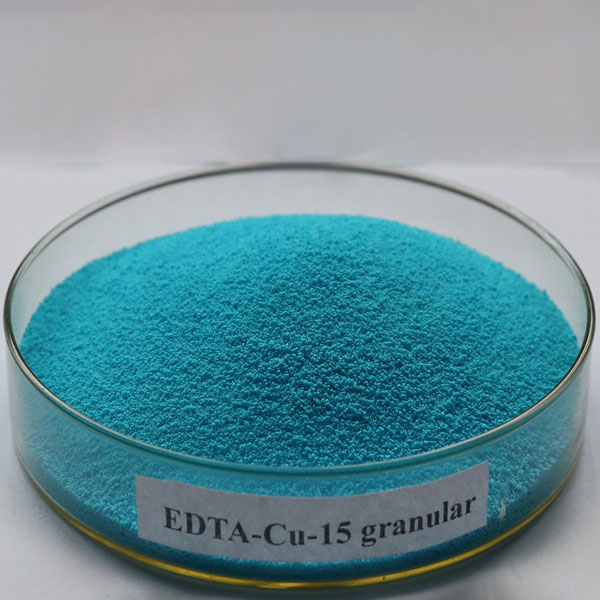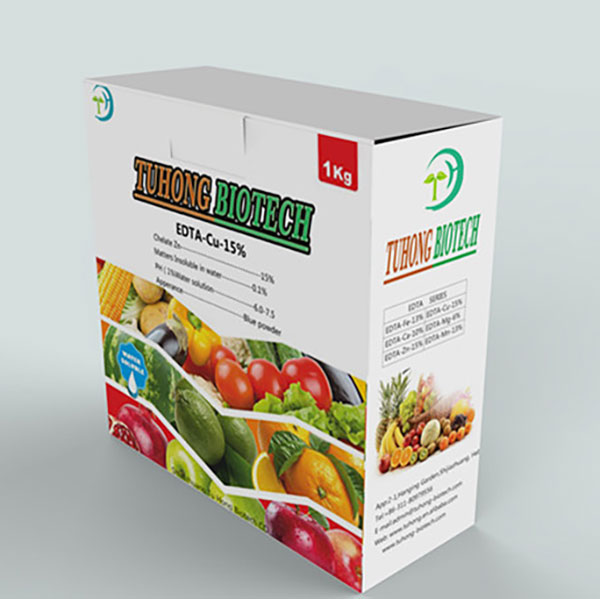EDTA CU 15% With Blue Crystalline Powder
Specification:
| Appearance: | Blue crystalline powder |
| Chelated Cu % | 15 (+/- 0.5) min |
| PH(10g/L, 25℃): | 6.0-7.0 |
| Heavy metal as Pb % | 0.001 max |
| Cd% | 0.001 max |
| As% | 0.0002 max |
| Matter insoluble %: | 0.1% |
| Characteristics: | dust-free product, easily and rapidly soluble in water because of its porous, compatible with most water-soluble fertilizers |
Packing: 25 kg net per kraft bag with PE inner, available in packages of 1.000 kg, 25 kg, 10 kg, 5 kg and 1 kg.
Storage : stored in the dry and ventilated inside storeroom ,prevent direct sunlight ,slightly pile and put down .
Product characteristics
| Appearance: | Blue Micro-crystal grains |
| PH(1 wt% solution): | 6-7.5 |
| Water solubility: | About 1200g / l (20℃), about 1700g/l (80℃) |
| Cas no.: | 14025 – 15 -1 |
| Copper content: | 15 % (+/- 0.5) as Cu |
| Characteristics: | dust-free product, easily and rapidly soluble in water because of its porous, compatible with most water-soluble fertilizers |
Against the symptoms and methods of use
| Usage | Irrigating UsageDrip irrigation UsageFoliar sprayingAs a foliar fertilizer and compound fertilizer raw materials
In addition to single-element EDTA chelates, it also offers physical mixes (blends) or compounds (chemical mixes). For physical mixes, macro-nutrients and/or additives like amino acids and humic acids can be added. |
| Deficiency of Copper | young leaf loss green, top withered, the blade tip white |
| The improvement | Copper is essential for several plant enzyme systems related to photosynthesis. It is part of the chloroplast protein plastocyanin, which is part of the electron transport chain. Copper has a function in the synthesis and/or stability of chlorophyll and other plant pigments. |
Dosing information
Foliar application:
| Citrus and fruit trees: | 25-40 g/hl. |
| Vegetables: | 20-35 g/hl. |
| Deciduous fruit and olive trees: | 100-150 g/hl. |
| Dosage higher than 100-150 g/hl causes defoliation to certain crops. | |
Fertigation:
| Citrus and fruit trees: | 1-5 kg/ha. Repeat along the cultivation according to needs. |
| Vegetables: | 0,5-1,5 kg/ha. Repeat along the cultivation according to needs. |
| Deciduous fruit and olive trees: | 1-1,5 kg/ha. |


Write your message here and send it to us







